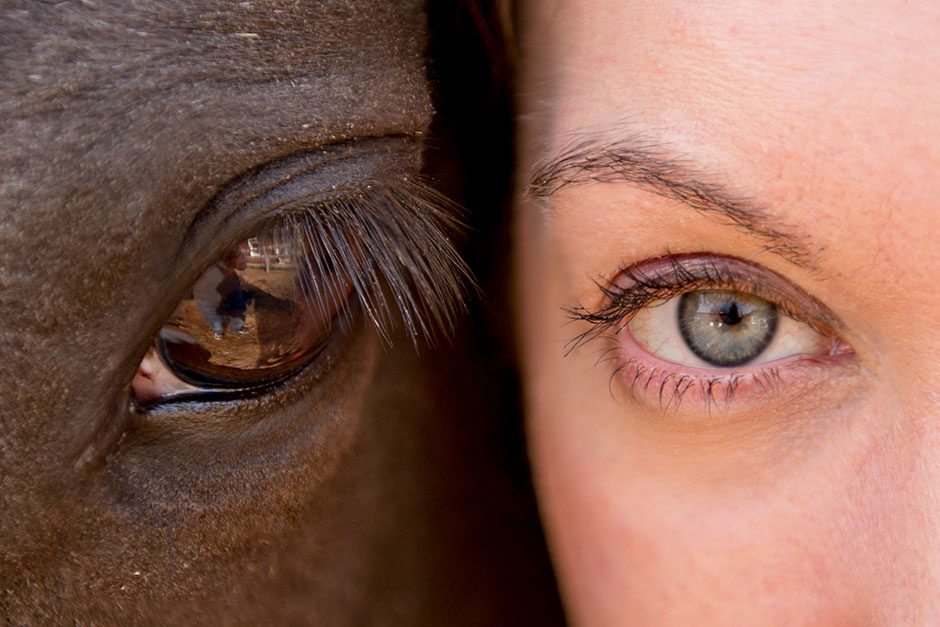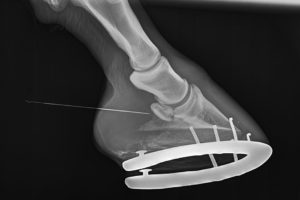Two months ago my typically quiet, loving and eager to please Dexter became a horse I didn’t recognize almost seemingly overnight. After diligently ruling out other possible causes for his change in behavior and knowing deer frequent his pasture, we turned to testing for Lyme disease.
Diagnosis of Lyme disease in horses is often elusive as symptoms can be quite variable. Some horses are able to tolerate infection without showing any signs of illness, while others can become severely ill. Due to these complications, the disease often creates more questions than answers; such as the warning signs, diagnostic tests and result interpretations.
What signs do horses with Lyme disease show?
An early diagnosis is paramount to preventing the most serious effects of Lyme disease, however signs of Lyme often don’t emerge for weeks after the tick bite and can greatly vary between infected horses.
The symptoms I observed that so drastically changed Dexter’s behaviors were:
- Cranky attitude
- Body soreness
- Shifting limb on-again, off-again lameness
- Low energy levels with a reluctance to work
What test can be used to diagnose the disease?
Diagnosing Lyme disease can be tricky. Most bloods tests look for antibodies produced as part of the horse’s immune response to the bacteria.
The Snap 4DX Plus Test by IDEXX is a quick and reliable screening test. It detects antibodies and provides a result in 10 minutes without requiring a lab. However, this simple test just shows a positive or negative and doesn’t quantify what type of infection your horse may have. Antibodies may continue to circulate in horses’ blood long after the bacteria are gone, so testing positive here could just mean that your horse was previously exposed to the disease and is not currently suffering from it. To determine the exact type of infection (acute/recent or chronic), you would need to do the full Multiplex Assay by Cornell.
After Dexter tested positive with the snap test (it’s wonderful having friends in the veterinary industry), I opted to send a blood sample to Cornell University’s College of Veterinary Medicine Animal Health Diagnostic Center through my local veterinarian. The AHDC Equine Lyme Multiplex Assay combines the advantages of the previous ELISA and Western blot testing. This procedure provides a quantitative measure of three different antibodies produced in response to the bacteria associated with Lyme disease (antigens of B. burgdorferi) using a single test on the sample. The assay also determines approximately when a horse was infected or how far the infection has developed (acute/recent or chronic).
How should test results be interpreted?
The Lyme Multiplex Assay results in a numeric antibody value for each of the three B. burgdorferi antigens tested, called outer surface proteins (Osp). A brief interpretation on each value is submitted with the final test report to your local veterinarian. Antibodies to OspA serve as markers for vaccination and those to OspC and OspF as markers for early or chronic infection.
Dexter tested positive for antibodies to OspF only which are predicative for chronic infection stages. Positive values usually fall within >1,250-26,000, where Dexter was at 1,749. Since he tested positive for chronic antibodies and negative for acute, this means that he had been infected for at least 5 months or more.
Treatment
Due to Lyme’s ability to “recur”, the real key to treating the disease is helping the immune system become as strong as possible. Treatment is also made challenging due to the fact that the bug selectively adapts to the individual’s body, so there’s no “one size fits all” fix.
1. Antibiotics
If you’ve found yourself in a similar situation and blood tests confirm that your horse has a chronic case of Lyme disease, don’t panic. Most cases respond quickly to antibiotic treatment. Typically prescribed oral medications include Doxycycline and Minocycline. Your veterinarian will be able to discuss the antibiotics available on the market to develop a plan of action for your horse.
Based on Dexter’s chronic infection diagnosis and my local veterinarian’s recommendations, I opted to treat his Lyme disease with 22 Minocycline pills twice a day for 45 days. It’s significantly more expensive than Doxycycline up front, but is given over a shorter period of time and therefore equals out in price. I also saved some pennies by ordering directly through Valley Vet—they worked with my local veterinarian to obtain the required prescription and dosage information. Minocycline pills also come in capsule form, which unbeknownst to me, most horses happily eat as-is without the need to empty, crush or drown in molasses. I learned this the hard way.
2. Complementary therapies
I saw improvement in Dexter’s demeanor after two days of treatment. But, that didn’t mean we were out of the woods quite yet. Being on antibiotics for long periods of time could prove harsh on a horse’s stomach, so I also decided to err on the side of caution and also feed a combination of daily probiotics and Omeprazole. With GastroGuard a bit out of my price range, I went with Abprazole Plus—an easy-to-feed once a day dosage of flavorless blue granules containing Omeprazole plus a pharmaceutical grade probiotic. Dexter never experienced any GI issues while on his medications, which I contribute to this course of action. The smallest quantity you are able to buy is 50 days worth, so I have a few left over to use when we go on field trips next year.
That wasn’t all! Dexter routinely gets a daily dosage of Cosequin ASU. Now more than ever it’s important that he continues to be on this supplement to help combat long-term inflammation in his joints resulting from the Lyme.
Prevention
Now you’re probably wondering, “What can I do to reduce the risk of my horse getting Lyme disease?” Unfortunately if you live in a high-risk area, there are only a few ways to mitigate your risk. Here are some things I would suggest:
- There is no approved vaccine for horses against Lyme disease, although some veterinarians are using a canine version of the vaccine in horses that test negative for the Lyme disease titer. Consult your veterinarian before giving your horse any vaccination.
- Carefully examine your horse daily and remove ticks immediately
- Regularly use fly sprays containing Permethrin or Pyrethrin to discourage ticks from latching onto your horse
- Keep grass pastures mowed, nearby brush trimmed and avoid heavily wooded areas when possible
Knowing your horse helps to realize when something is different about him—don’t just ignore this sign. A diagnosis of Lyme disease is not the end of the world. Proper testing and treatments, all under the supervision of your veterinarian, can lead to a full recovery; it has for Dexter!
Do you have experience with Lyme disease in your horse?




